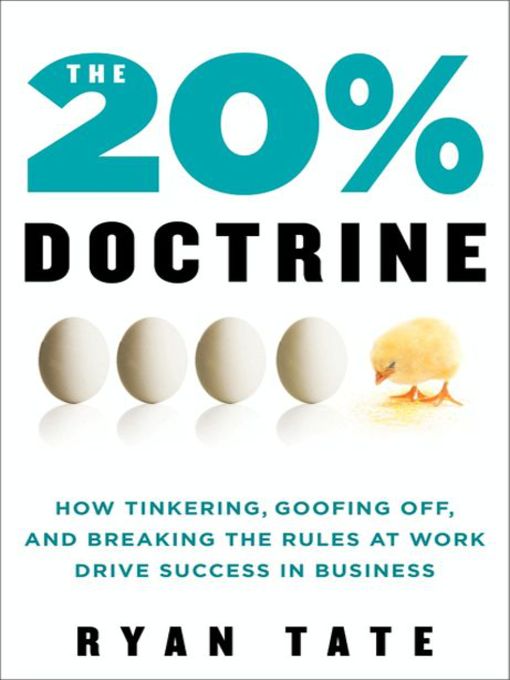
The 20% Doctrine
کتاب های مرتبط
- اطلاعات
- نقد و بررسی
- دیدگاه کاربران
نقد و بررسی

March 26, 2012
The 20% doctrine, in which employees are given a fifth of their work time to focus on projects they're personally interested in, is hardly newâ3M has been using a version of it for yearsâbut the concept took off as more companies took note of its potential. Gawker.com tech gossip blogger Tate shows how companies have employed the concept with varying degrees of success. When Google employees were given free reign, they came up with Gmail and AdSense (the pay-per-click advertising program that generates around $10 billion a year), as well as Google Reader, a high-profile failure-to-launch. Tate doesn't tout companies or executives. Rather, he champions the process, letting his case studies demonstrates how key tenetsâstart looking for problems internally, move quickly, allow for subsequent iterationsâare just as important to success as the ideas themselves. He also shows how the concept can work externally, recounting how The Huffington Post took the notion and spun it on its head by asking readers to cover the 2008 election via its Off the Bus citizen journalism project. Tate's enthusiastic but objective study gathers momentum as the book progresses; each chapter builds on the previous one, and he's quick to point out the practicality of the process. Whether readers are in the corner office or the boiler room, they'll likely find Tate's opus to be inspiring and informative.

April 1, 2012
Gawker.com technology gossip blogger Tate debuts with an account of how companies are innovating by freeing workers to dream up their own side projects. In six case studies, the author shows how Google's "20 percent time" policy--which encourages Google engineers to take 20 percent of their time to work on ideas that interest them personally, an approach that has led to the creation of both Gmail to Google News--has inspired other corporations to find ways to empower employees to pursue their passions. The policy is now "harvesting innovation from the margins" at many tech and other companies. Side projects have common tenets: They provide creative freedom, connect with people's passions, generate crude early versions, leverage existing products, generate improvements rapidly to create in-house buzz, continually "sell" the project in the hope of becoming a full-blown company initiative and embrace the help of people outside the organization. Tate's case studies detail the evolution of side projects and lessons learned at selected companies, including Google, where an engineer's effort to create Gmail proceeded in incremental advances, allowing him to show colleagues he was incorporating their ideas, getting feedback on flaws and generating discussion on how to grow the product; Ludicorp, a Web startup with limited resources, which reinvented itself with a side project that produced the leading photo website Flickr; and Yahoo, whose Hack Days ("like 20 percent time on crack") allow participants to create initial designs and collect feedback. Other chapters describe innovations by zealous individuals in non-tech settings, including the creation of the Bronx Academy of Letters, an unusual high school based on high expectations in an impoverished South Bronx neighborhood; the Huffington Post's "Off the Bus" project, which galvanized thousands of volunteer citizen journalists to offer a different kind of coverage of a presidential election; and top chef Thomas Keller's side project in nostalgia that led to the launch of a successful new restaurant, Ad Hoc. Useful and inspiring advice for tinkerers.
COPYRIGHT(2012) Kirkus Reviews, ALL RIGHTS RESERVED.

























دیدگاه کاربران